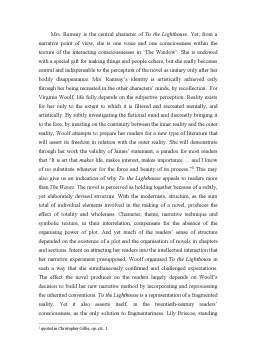Extras din curs
JAMES JOYCE
Now, as never before, his strange name seemed to him a prophecy. So timeless seemed the grey warm air, so fluid and impersonal his own mood, that all ages were as one to him. [ ] Now, at the name of the fabulous artificer, he seemed to hear the noise of dim waves and to see a winged form flying above the waves and slowly climbing the air. What did it mean? Was it a quaint device opening a page of some medieval book of prophecies and symbols, a hawklike man flying sunward above the sea, a prophecy of the end he had been born to serve and had been following through the mists of childhood and boyhood, a symbol of the artist forging anew in his workshop out of the sluggish matter of the earth a new soaring impalpable imperishable being? (A Portrait of the Artist as a Young Man, 192)
His soul had arisen from the grave of boyhood, spurning her graveclothes. Yes! Yes! Yes! He would create proudly out of the freedom and power of his soul, as the great artificer whose name he bore, a living thing, new and soaring and beautiful, impalpable, imperishable. (A Portrait of the Artist as a Young Man, 193)
Some of its original readers, Virginia Woolf or T.S. Eliot, hailed Joyce’s work as “the most important expression which the present age has found.” Others, like Bennett or Aldington, were repelled by it, seeing it as “a tremendous libel on humanity.” Yet, no matter if they praised it for being able “to come closer to life” or loathed it for being “indecent, obscene, scatological and licentious” , all agreed that Joyce’s work was remarkable, technically successful, an astonishing literary phenomenon.
Of the English modernist novelists’ works, Joyce’s most strikingly asserts itself as art, the art of fiction - art as a form of knowledge, art as autonomous, art as a form of expression enjoying the advantage of a medium of its own. Of all the English modernists’ works, Joyce’s is the indubitable evidence that if there is any difference at all between realism and modernism in literary terms, it does not reside so much in the sense realism and modernism make of the real, but in the new status assigned to literature. Thus Joyce’s work may be seen as an unparalleled artistic answer to the essential modernist questions relating to the essence of the literary act.
What is the proper stuff of fiction?
“The proper stuff of fiction” does not exist; everything is a proper stuff of fiction, every feeling, every thought; every quality of the brain and spirit is drawn upon; no perception comes amiss. And if we can imagine the art of fiction come alive and standing in our midst, she would undoubtedly bid us break her and bully her, as well as honour her, for so her youth is renewed and her sovereignty assured.”
How is the material that life provides to be made into art?
“Any method is right, every method is right, that expresses what we wish to express, if we are writers; that brings us closer to the novelist’s intention, if we are readers.”
What Joyce demonstrates through his work is that, if fiction is to be raised to the status of art, this can be done only through focus on the potentialities of what gives the art of fiction its specificity in relation to the other arts, that is language and technique. This does not mean that Joyce’s narrative strategy necessarily, and exclusively, implies the adoption of completely new techniques, that is techniques that had not been also used by his predecessors. Joyce’s originality, much of the difficulty presupposed by the reading of his texts being caused by it, resides in the variety and the combination of techniques. For Joyce, each method is seen as a pathway to knowledge. The more variations on a method he could imagine, the deeper the meaning that began to surface. The less expected the combination of methods, the richer the aspects of reality that were likely to be revealed. By this strategy, Joyce did in no way attempt to destroy the illusion of reality or to discard as useless the methods employed to create this illusion. He rather tried to “heighten our awareness of the techniques he so skilfully deploys by raising questions about our strategies of interpretation.”
Preview document
Conținut arhivă zip
- English Modernism
- D. H. Lawrence.doc
- James Joyce.doc
- Joseph Conrad.doc
- MODERNISM.doc
- modernist art of fiction.doc
- THE METALANGUAGE OF MODERNIST FICTION.doc
- Virginia Woolf.doc


















































































































































































